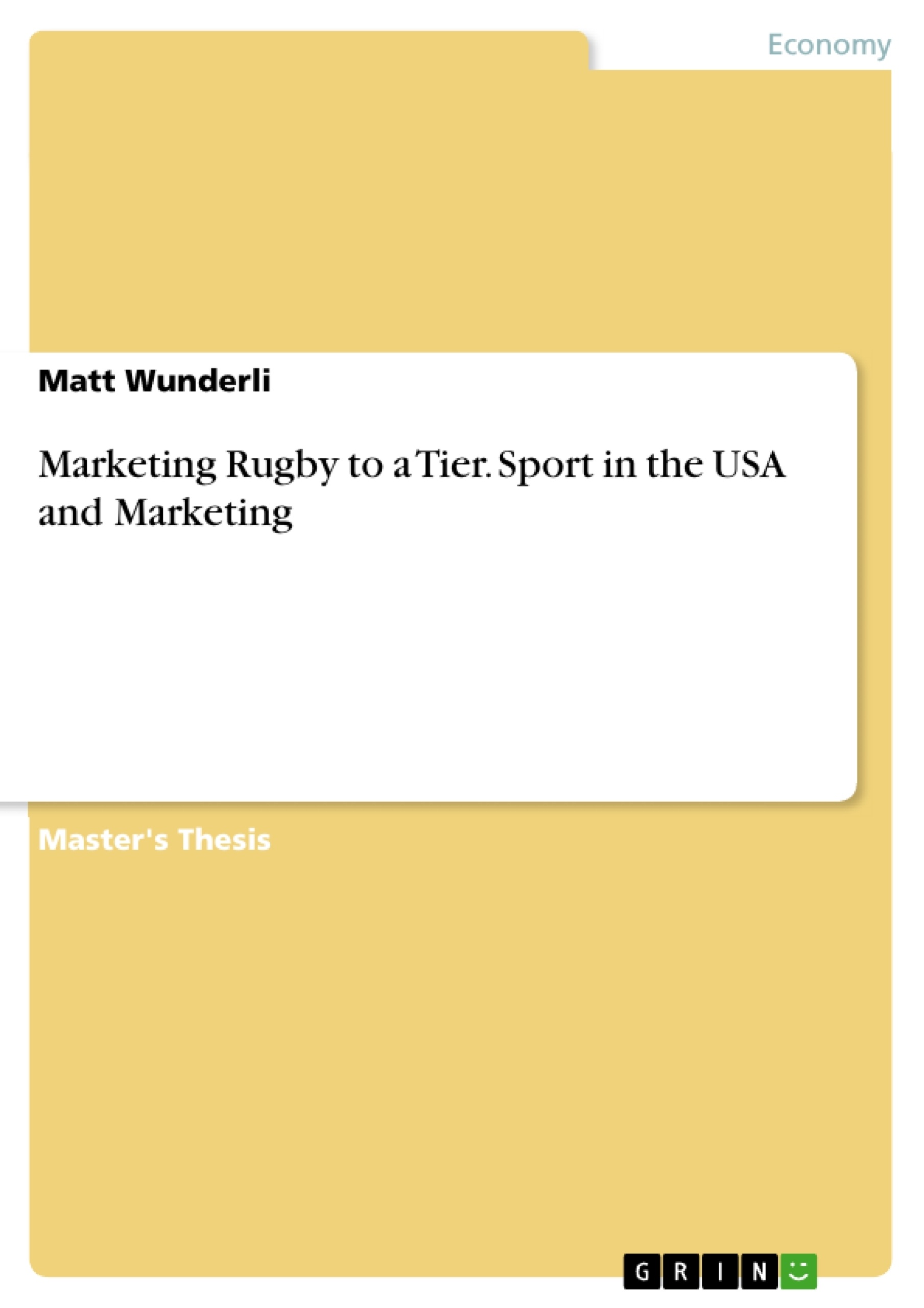The sports market in the U.S. is as competitive as ever, doubling the size of the automobile industry in 2009. It has reached an estimated worth of $213 billion , with sports both traditional and non-traditional vying for attention. In the middle of that sports market sits rugby. Rugby union is a global game played in many countries across the world. It has reached and inspired millions of sporting fans worldwide via its events like the Rugby World Cup (IRB). The sport is considered an emerging sport in the U.S. and consumer loyalty remains hidden in the small rugby community throughout the country. There appears to be many people that are aware of rugby, however, the sport hasn’t made a big enough impact to attract more spectators, or even sponsors. There is a small and loyal rugby community in the United States that appears to be growing, but becomes stagnant in growth post collegiate level. The proliferation of a tier I rugby venue in the USA, built on a foundation of brand loyalty and a growing long term fan base through marketing methods and development, is the driving force behind this study.
Inhaltsverzeichnis (Table of Contents)
- Introduction
- Background
- Problem Definition
- Research Aim & Questions
- Research Objectives
- Methodological Approach
- Focus Group
- Interviews
- Analysis and Findings
- Market
- Product
- Place
- Price
- Promotion
- Limitations
- Conclusion and Recommendations
- References
- Appendix
Zielsetzung und Themenschwerpunkte (Objectives and Key Themes)
This study aims to investigate the potential for rugby union to become a tier I sport in the USA, exploring the factors that contribute to its current popularity and identifying potential strategies for growth. The study focuses on understanding the American sports market and developing a marketing strategy that leverages the existing rugby community while attracting new fans. Here are some key themes explored in this work:- The competitive landscape of the American sports market
- The history and development of rugby in the USA
- The marketing strategies for establishing rugby as a tier I sport
- The importance of brand loyalty and youth development in the growth of rugby
- The unique challenges and opportunities for rugby in the USA
Zusammenfassung der Kapitel (Chapter Summaries)
The introduction provides a contextual overview of the competitive landscape of the American sports market and outlines the research question driving the study. The chapter explores the history of rugby in the USA, highlighting its unique challenges and opportunities within the country's sports culture.
The "Market" section delves into the various marketing aspects of rugby, including product, place, price, and promotion. It examines strategies for promoting rugby within the American context and explores the importance of establishing brand loyalty and youth development programs.
The study's "Limitations" section acknowledges the inherent constraints of the research and discusses potential areas for further exploration.
The final chapter, "Conclusion and Recommendations," offers a comprehensive summary of the study's findings and proposes actionable recommendations for the development of rugby in the USA.
Schlüsselwörter (Keywords)
This study focuses on the marketing and development of rugby union as a tier I sport in the USA. Key concepts include the American sports market, brand loyalty, youth development, marketing strategies, and the unique challenges and opportunities for rugby in the USA.- Citar trabajo
- Matt Wunderli (Autor), 2012, Marketing Rugby to a Tier. Sport in the USA and Marketing, Múnich, GRIN Verlag, https://www.grin.com/document/195027



